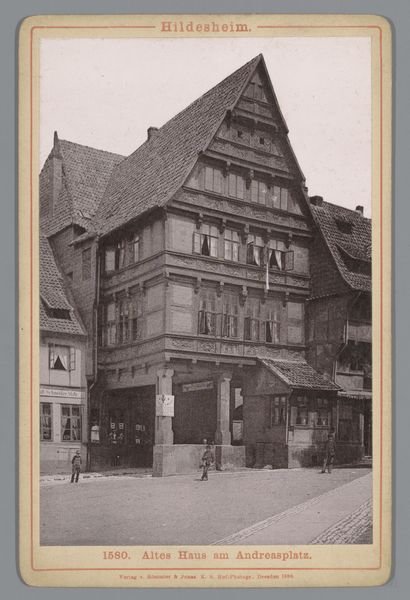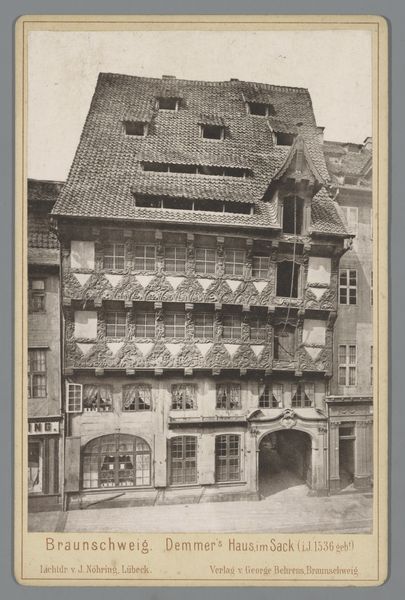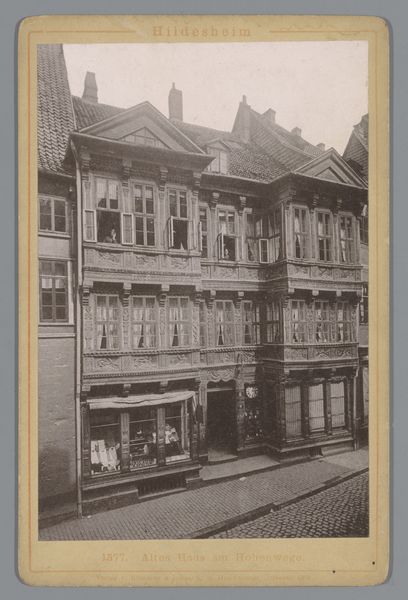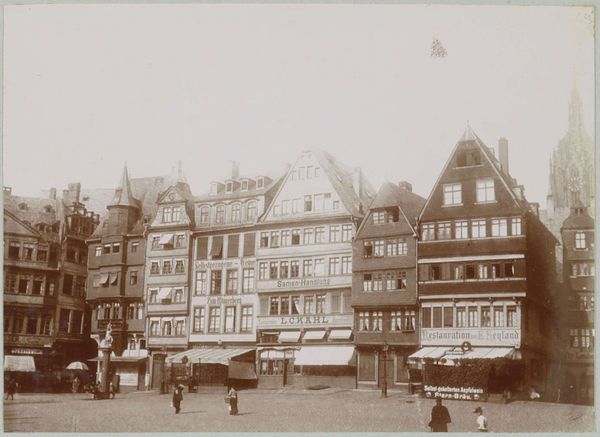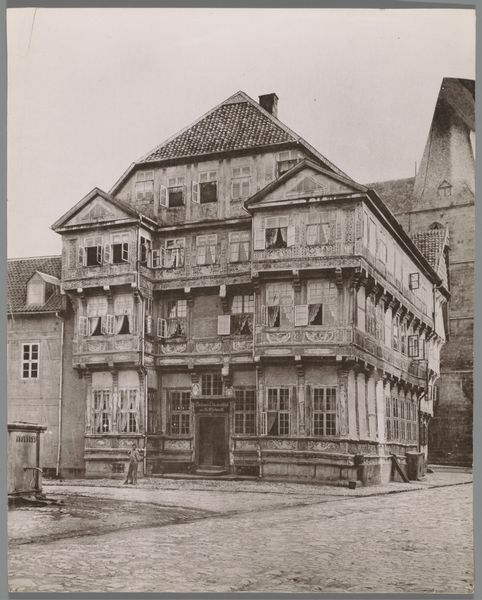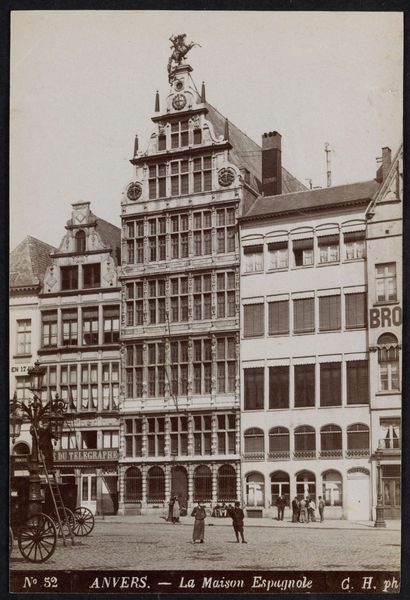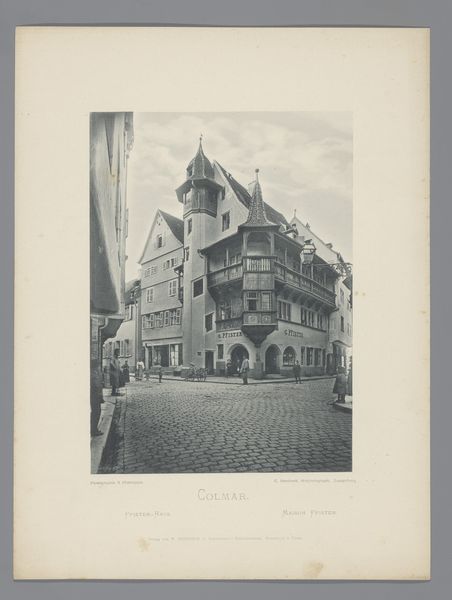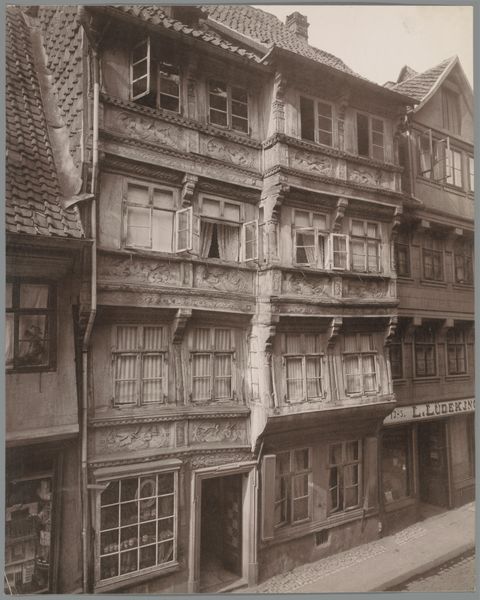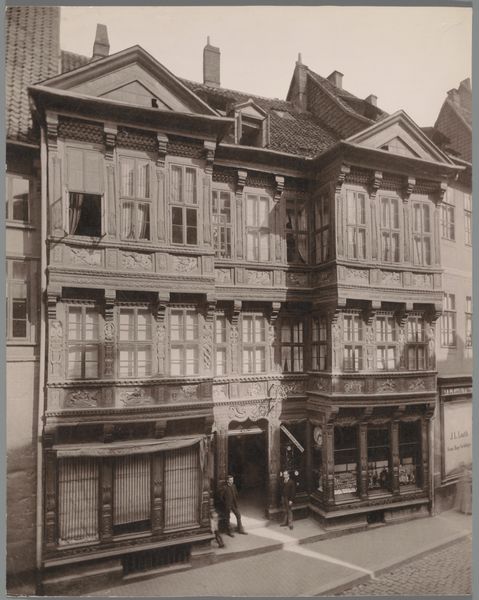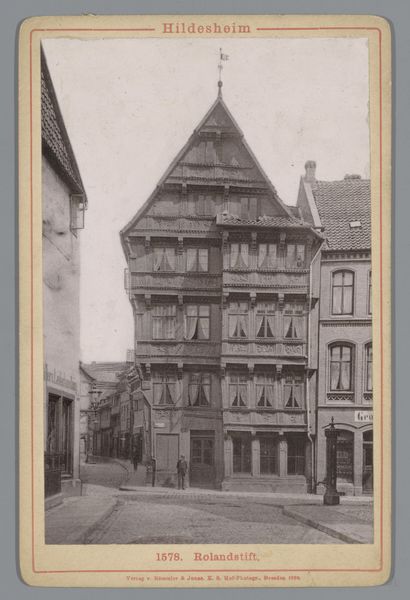
print, photography, architecture
#
portrait
#
16_19th-century
# print
#
german-expressionism
#
historic architecture
#
traditional architecture
#
photography
#
neo-romanticism
#
19th century
#
cityscape
#
architecture
#
realism
#
historical building
Dimensions: height 287 mm, width 232 mm
Copyright: Rijks Museum: Open Domain
Editor: Here we have "Street View with Corner House in Hildesheim," a photograph from around 1880-1900, attributed to E. Mertens & Cie. It's so detailed; you can almost feel like you're there on that street. What do you see in this piece? Curator: What I see is a meticulously crafted narrative of a very specific time and place, laden with socioeconomic implications. Think about Hildesheim during that period. The architecture screams of a pre-industrial, almost romanticized past. But the very act of photographing it suggests something else, a burgeoning awareness of modernity. Editor: Modernity? How so? Curator: Photography itself was a democratizing force, allowing for wider dissemination of images. But also, who owned these buildings? What class structures are visible here? Notice the way the light falls, almost theatrical. Are we meant to simply admire the aesthetics or to question the realities it presents? What stories are not being told? Editor: That's fascinating! I was so focused on the beautiful architecture, I didn't even think about those kinds of questions. Curator: Exactly! It’s crucial to remember that even seemingly neutral depictions reflect choices, perspectives, and ultimately, power dynamics. Considering photography's evolution is also significant - it transitioned from a tool of documentation to a potent instrument shaping collective memory. Editor: So, by studying this photograph, we can unlock secrets of that society? Curator: Precisely. We're not just viewing a street; we're interrogating a society’s self-image, and hopefully, deconstructing it. Editor: I’ll never look at historical photographs the same way again! Thank you. Curator: It's about finding the activist potential in the image. Examining photographs such as this creates space for new, necessary dialogue about how the built environment intersects with power and inequality.
Comments
No comments
Be the first to comment and join the conversation on the ultimate creative platform.


